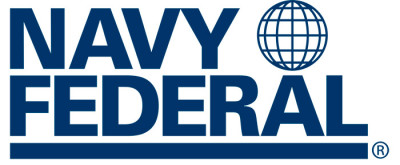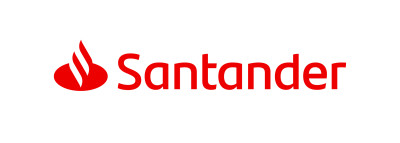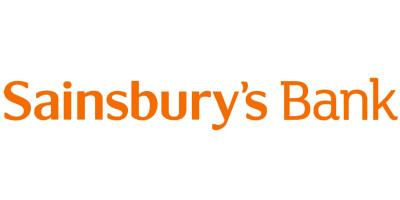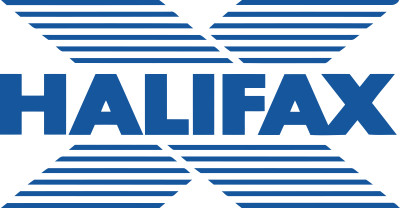Home Improvement
Home improvement loans can help you finance repairs, renovations and additions to your home. Compare offers from multiple lenders to find the best rates and terms.
A home improvement loan helps you pay for renovations and repairs around the house. You can use this type of personal loan to upgrade your kitchen, install a swimming pool or repair your roof. Home improvement loans let you finance a renovation without using your home as collateral. They're also usually funded more quickly than other financing options. Compare offers from multiple lenders to find a loan that suits your project and budget.
Best Home improvement loans

LightStream provides an attractive option for personal loans, especially if you have a strong credit history. With competitive interest rates and a lack of fees, it's a borrower-friendly choice.
Pros and cons

Discover stands out for several reasons. First, it offers unsecured personal loans, which means borrowers don't have to provide collateral like a car or savings account.
Pros and cons

Navy Federal extends another proprietary loan option called Homebuyers Choice, tailored for nonmilitary borrowers who are eligible for credit union membership (including civilian employees of the Department of Defense).
Pros and cons

Wells Fargo provides various small-business loans, including secured and unsecured business lines of credit, commercial real estate purchase and refinancing loans, commercial real estate equity loans, lines of credit, and health care practice financing.
Pros and cons

HSBC offers Personal, Premier, Car, Home Improvement, and Debt Consolidation loans with competitive rates and exclusive Premier benefits.
Pros and cons

M&S Bank presents a diverse range of loans that offer flexibility in both borrowing amounts and repayment periods, featuring representative APRs.
Pros and cons

Santander offers various loans for personal needs, cars, home improvements, consolidating debts, and special occasions.
Pros and cons

Sainsbury's Bank, a subsidiary of the esteemed UK supermarket, offers a diverse range of financial services, including loans, credit cards, insurance, and savings accounts, with a focus on customer convenience and competitive solutions.
Pros and cons

Halifax's personal loans are tailored for various purposes, such as major purchases or consolidating debts, without the requirement of collateral.
Pros and cons

Zopa Bank, renowned for its tech-savvy approach combined with financial acumen, is committed to offering simple, transparent, and customer-focused financial products.
Pros and cons
Home improvements may be easier with a personal loan
Securing a home improvement loan is still possible, even if your credit history isn't pristine. However, in such cases, there are some important considerations to keep in mind:
- Loan Amount and Interest Rates: If you have a less-than-perfect credit score, you may still be eligible for a home improvement loan, but the loan amount you can borrow might be limited, and the interest rates could be higher to account for the added risk.
- Specialized Lenders: Fortunately, there are lenders who specialize in providing loans to borrowers with bad credit. These lenders have tailored offerings that cater to individuals with credit challenges.
By exploring these tailored loan options and comparing them through reputable platforms, you can increase your chances of securing the financing you need for your home improvement project, even if your credit history isn't perfect.
FAQ
How do home improvement loans work?
- Determine Your Home Improvement Needs: First, identify the specific home improvement projects you want to undertake and estimate the total cost. This could include renovations, repairs, landscaping, or other improvements.
- Research Loan Options: There are several types of home improvement loans available, and the right one for you will depend on your financial situation and the scope of your project. Apply for the Loan: Once you've chosen the type of loan that best fits your needs, you'll need to apply with a lender. The lender will review your credit history, income, and other financial factors to determine your eligibility and the terms of the loan.
- Receive Funds: Upon approval, you'll receive the loan funds. Depending on the type of loan, you may receive a lump-sum payment, access to a line of credit, or the funds may be disbursed directly to contractors or suppliers for your home improvement project.
- Complete the Home Improvement Project: Use the funds as planned to carry out your home improvement project. Be sure to manage your budget carefully to ensure the funds cover the expenses.
- Repayment: You'll need to repay the loan according to the terms outlined in the loan agreement. This typically includes making monthly payments of principal and interest until the loan is fully paid off.
- Enjoy the Benefits: Once the project is completed, you can enjoy the improved living space or increased property value that the home improvements provide.
What are home improvement loan rates?
Home improvement loan rates typically range from about 6% to 36%. The best personal loan rates typically go to borrowers with high credit scores and credit histories showing consistent on-time payments toward other loans and credit cards.
What qualifies for a home improvement loan?
Qualifying for a home improvement loan typically involves meeting specific eligibility criteria set by lenders. The exact requirements can vary depending on the type of loan you're applying for and the lender you choose. Here are some common qualifications for home improvement loans:
- Good Credit Score: Lenders generally prefer borrowers with good to excellent credit scores. A higher credit score can result in more favorable loan terms, including lower interest rates. However, some lenders offer loans to borrowers with lower credit scores, but they may come with higher interest rates or stricter terms.
- Stable Income: Lenders want to see evidence of a stable income to ensure you can make the monthly loan payments. You may need to provide proof of employment, pay stubs, or tax returns as part of the application process.
- Sufficient Equity: If you're applying for a home equity loan or HELOC, you'll need sufficient equity in your home to serve as collateral. Lenders typically require a certain loan-to-value (LTV) ratio, which is the amount of the loan compared to the home's appraised value. The specific LTV requirements vary but often range from 80% to 90%.
- Loan Purpose: Lenders may inquire about the purpose of the loan to ensure it aligns with home improvement needs. You may be required to provide a detailed explanation or estimate of the renovation or repair work you plan to undertake.
- Debt-to-Income Ratio (DTI): Lenders assess your DTI to evaluate your ability to manage additional debt. DTI is the ratio of your monthly debt payments to your monthly income. A lower DTI is generally more favorable for loan approval.
- Documentation: Expect to provide documentation supporting your application, such as identification, proof of homeownership, bank statements, and other financial records. The specific documents required can vary by lender.
- Home Appraisal: If you're applying for a home equity loan or HELOC, the lender may require a home appraisal to determine the property's current value accurately.
- Ability to Repay: Lenders assess your ability to repay the loan by evaluating your credit history, income, and existing debt obligations.
It's important to note that different lenders have varying eligibility criteria, and some may be more flexible than others. If you don't meet the requirements for one lender, you may find another that is more accommodating. Additionally, government-backed loans, such as FHA 203(k) loans, may have different eligibility criteria compared to conventional loans.
Home improvement loan or credit card?
Deciding between a home improvement loan and a credit card for financing your home improvement project depends on your specific needs, financial situation, and preferences. Here are some considerations to help you choose between the two:
Home Improvement Loan:
- Fixed Interest Rate: Home improvement loans typically offer a fixed interest rate for the duration of the loan. This means your monthly payments remain consistent, providing predictability.
- Larger Loan Amounts: Home improvement loans may allow you to borrow larger amounts compared to most credit cards, making them suitable for substantial renovation projects.
- Extended Repayment Terms: You can choose longer repayment terms with home improvement loans, which can result in lower monthly payments but may lead to paying more interest over time.
- Easier Budgeting: Fixed monthly payments make it easier to budget for your home improvement project, as you know exactly what to expect.
- Potentially Lower Interest Rates: If you have good credit, you may qualify for lower interest rates on home improvement loans compared to credit cards.
Credit Card:
- 0% Introductory APR: Some credit cards offer a 0% introductory APR for a promotional period, typically ranging from 3 to 20 months. During this time, you won't pay interest on your purchases as long as you pay off the balance before the promotional period ends.
- Flexible Repayment: Credit cards offer flexibility in terms of how much you pay each month. You can choose to pay more or less than the minimum required amount.
- Smaller Projects: Credit cards are suitable for smaller home improvement projects or purchases, such as furniture or appliances.
- Rewards and Benefits: Some credit cards offer rewards, cashback, or other benefits for home improvement spending, providing potential savings or perks.
- No Collateral: Credit cards are unsecured, meaning you don't need to use your home or other assets as collateral.
Consider the following when making your decision:
- Project Size: For larger projects with significant costs, a home improvement loan may be more appropriate due to its ability to provide higher loan amounts and longer repayment terms.
- Interest Rate: Compare the interest rates on home improvement loans and credit cards. If you can secure a low-interest rate on a loan and plan to repay it over time, it may be more cost-effective than a credit card with a short promotional period.
- Repayment Plan: Assess your ability to repay the borrowed funds. If you're confident you can pay off the balance during a 0% introductory APR period and prefer flexibility in monthly payments, a credit card could work well.
- Budgeting: Consider your budgeting preferences. If you prefer fixed monthly payments for easier budgeting, a home improvement loan may be the better choice.
Ultimately, the decision depends on your individual circumstances and the nature of your home improvement project. It's advisable to compare loan offers, interest rates, and credit card terms before making a choice.